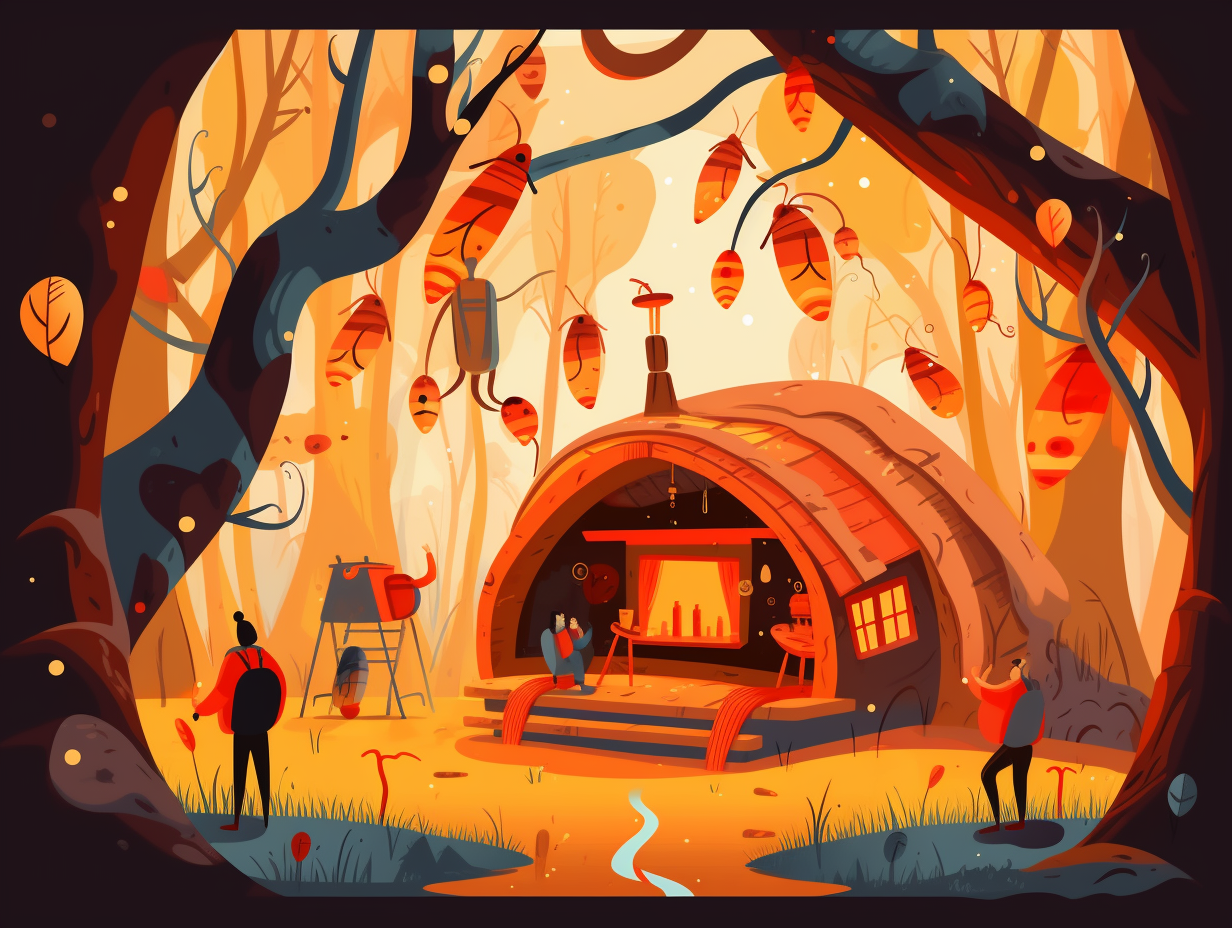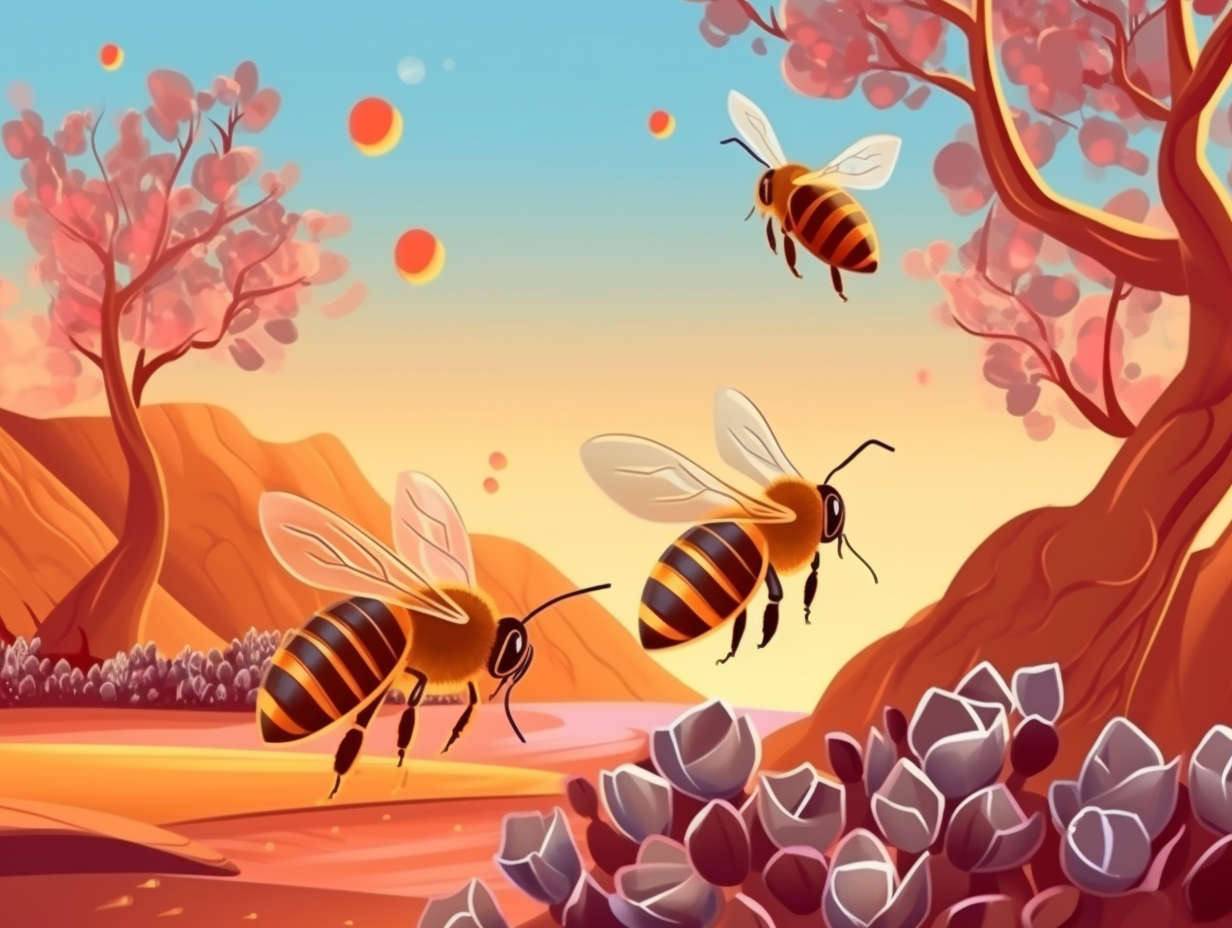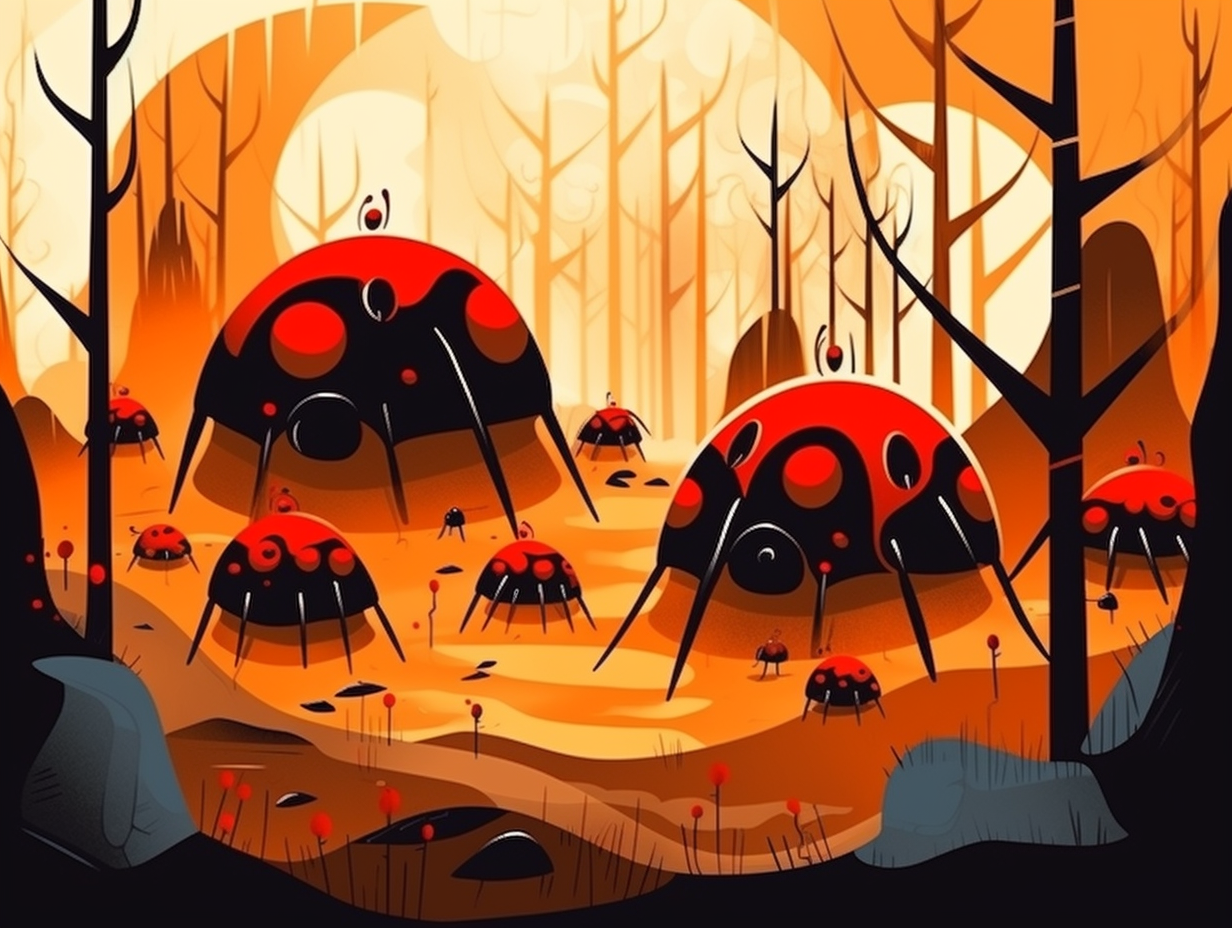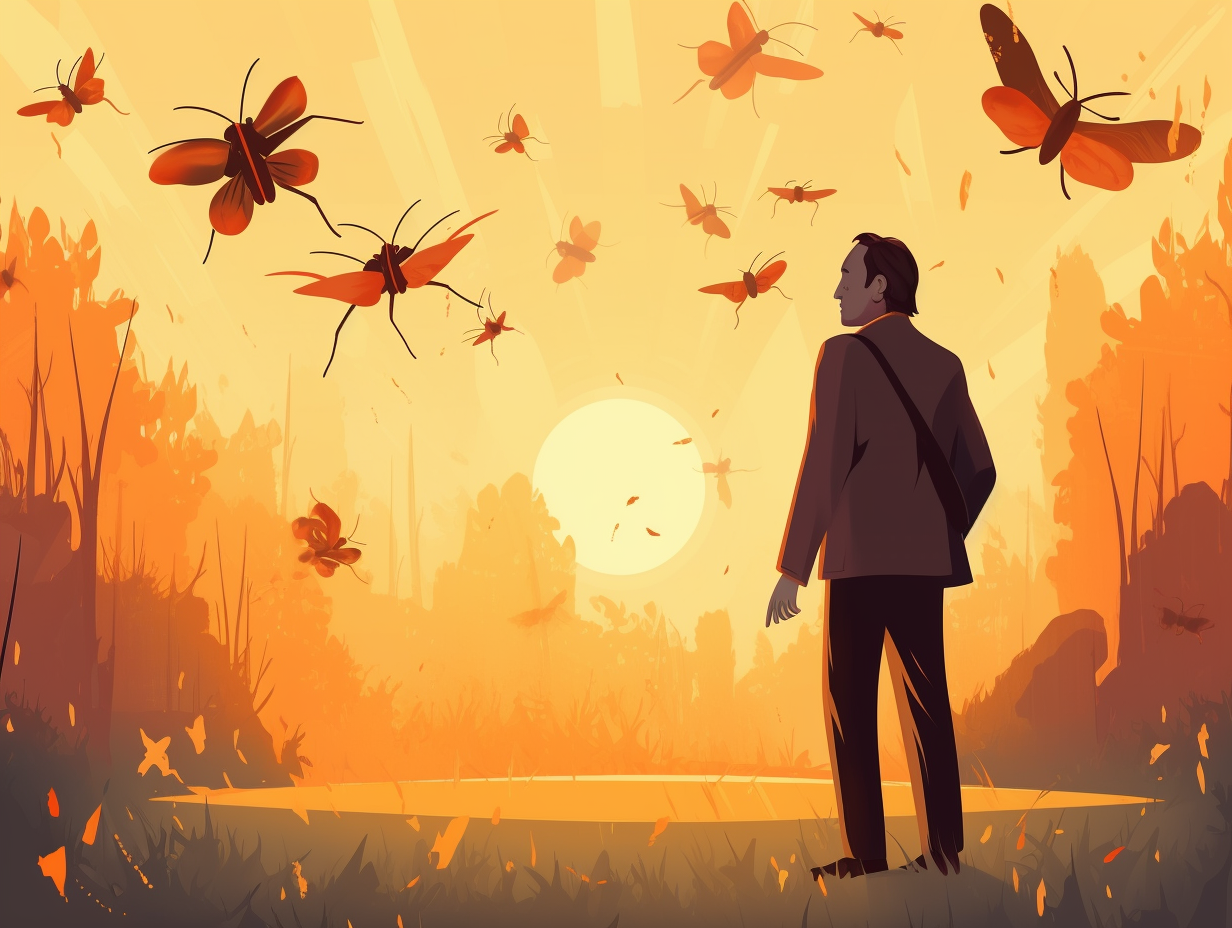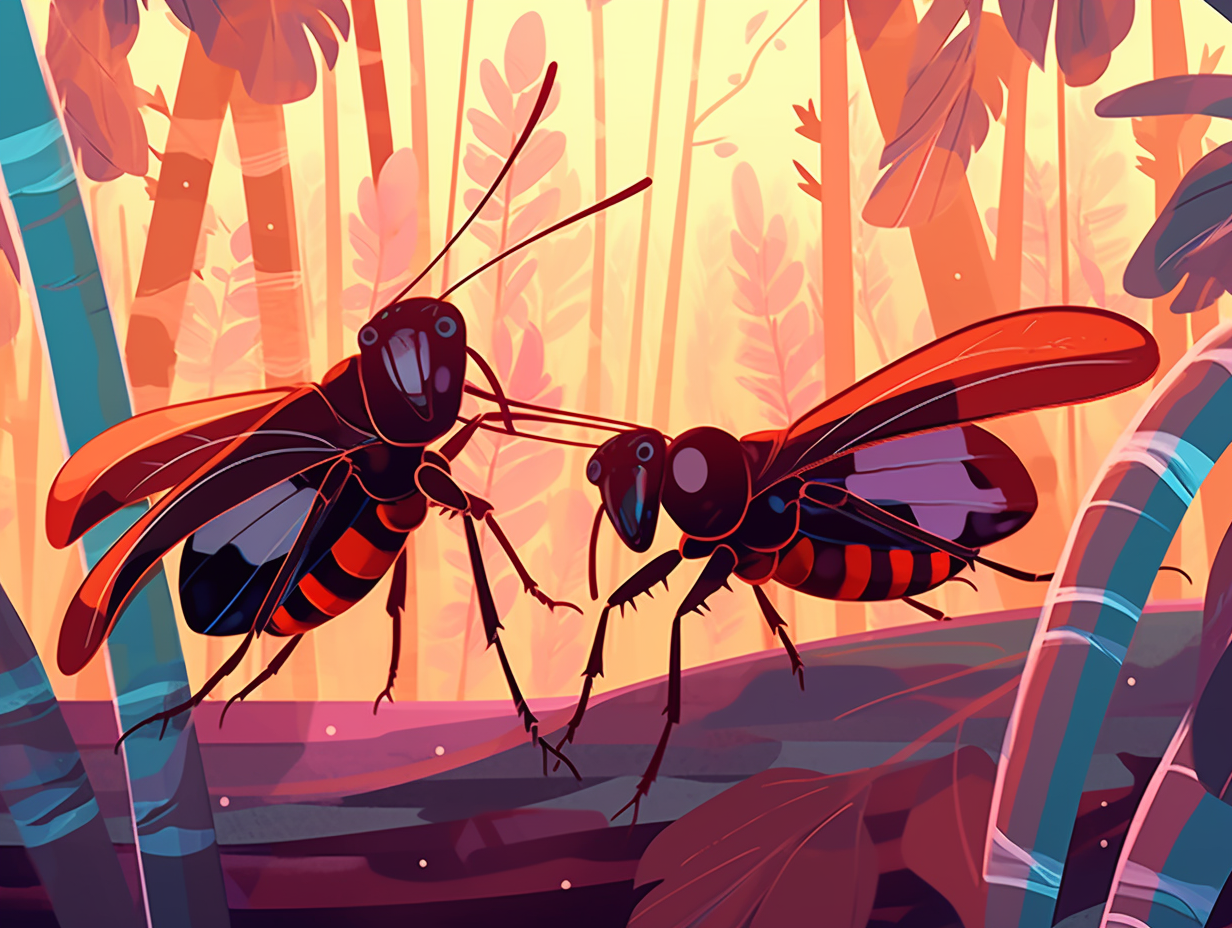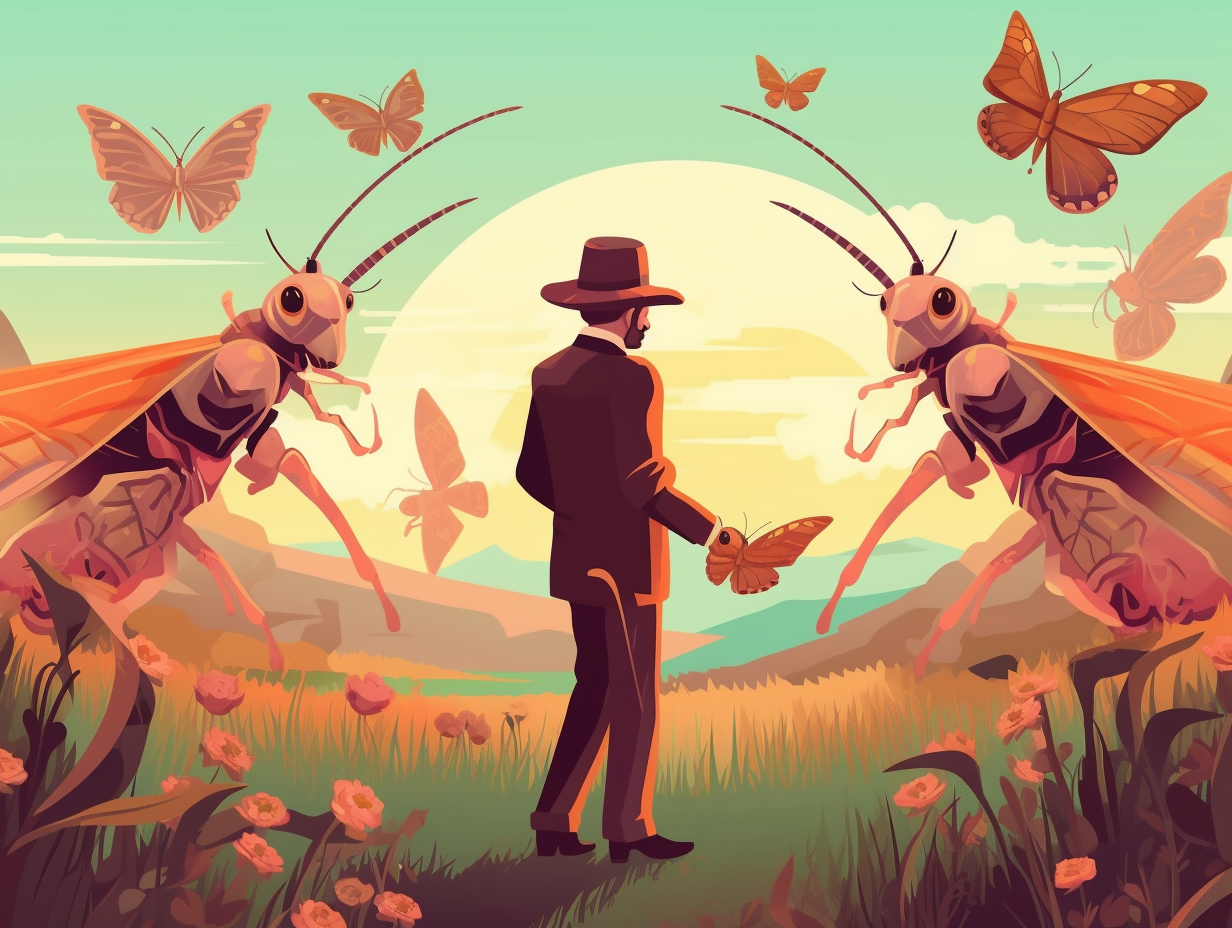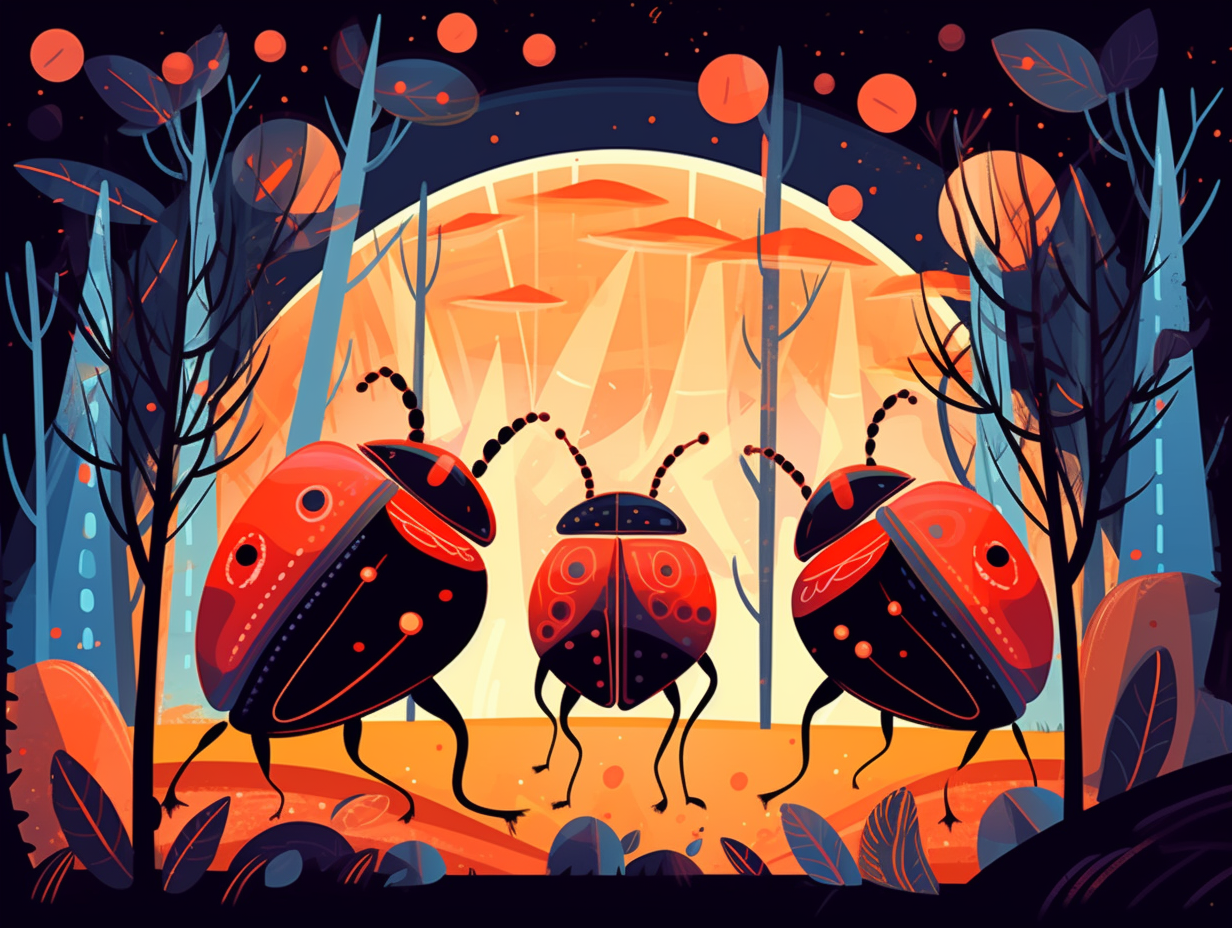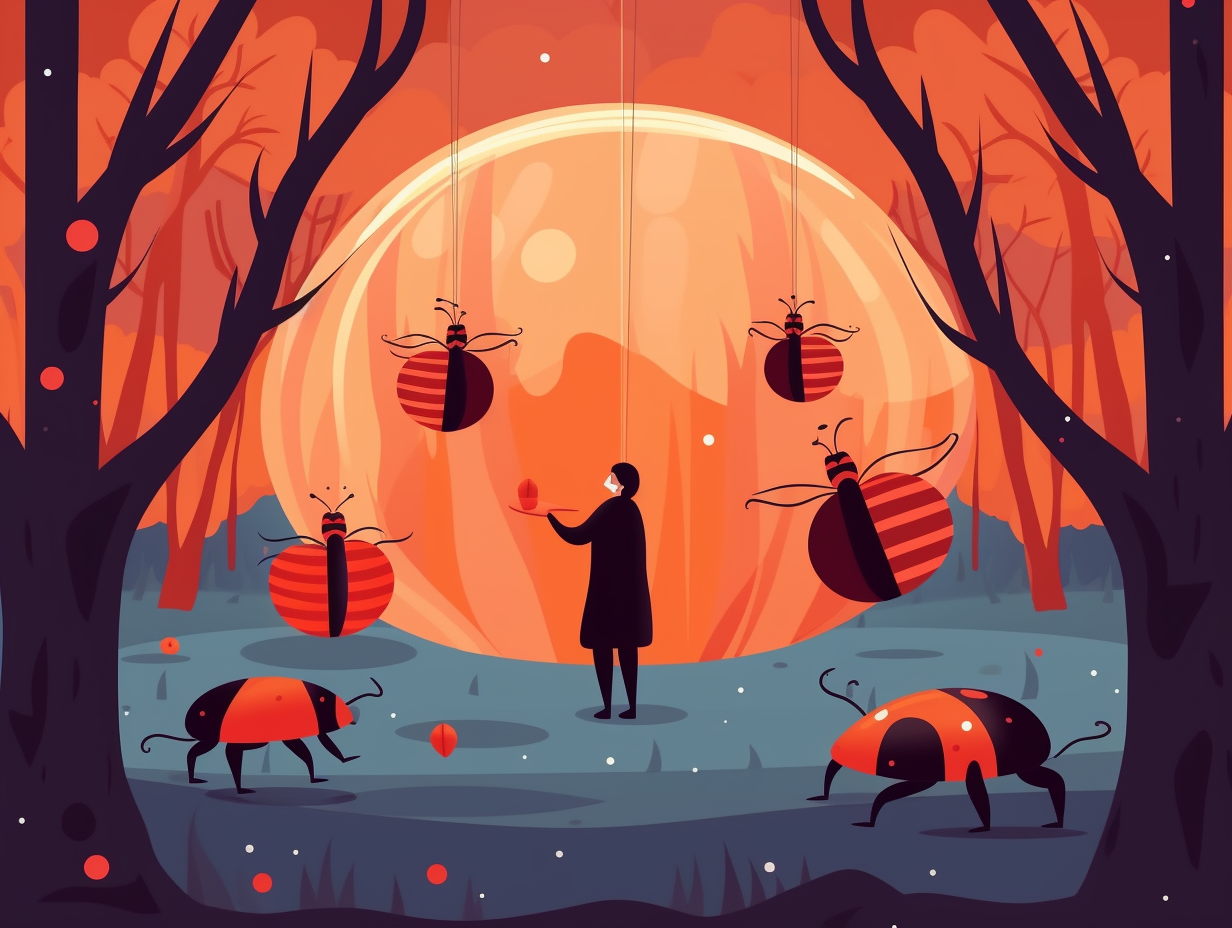Discover the Intriguing World of Fire Ants: Top 13 Fun Facts You Never Knew!
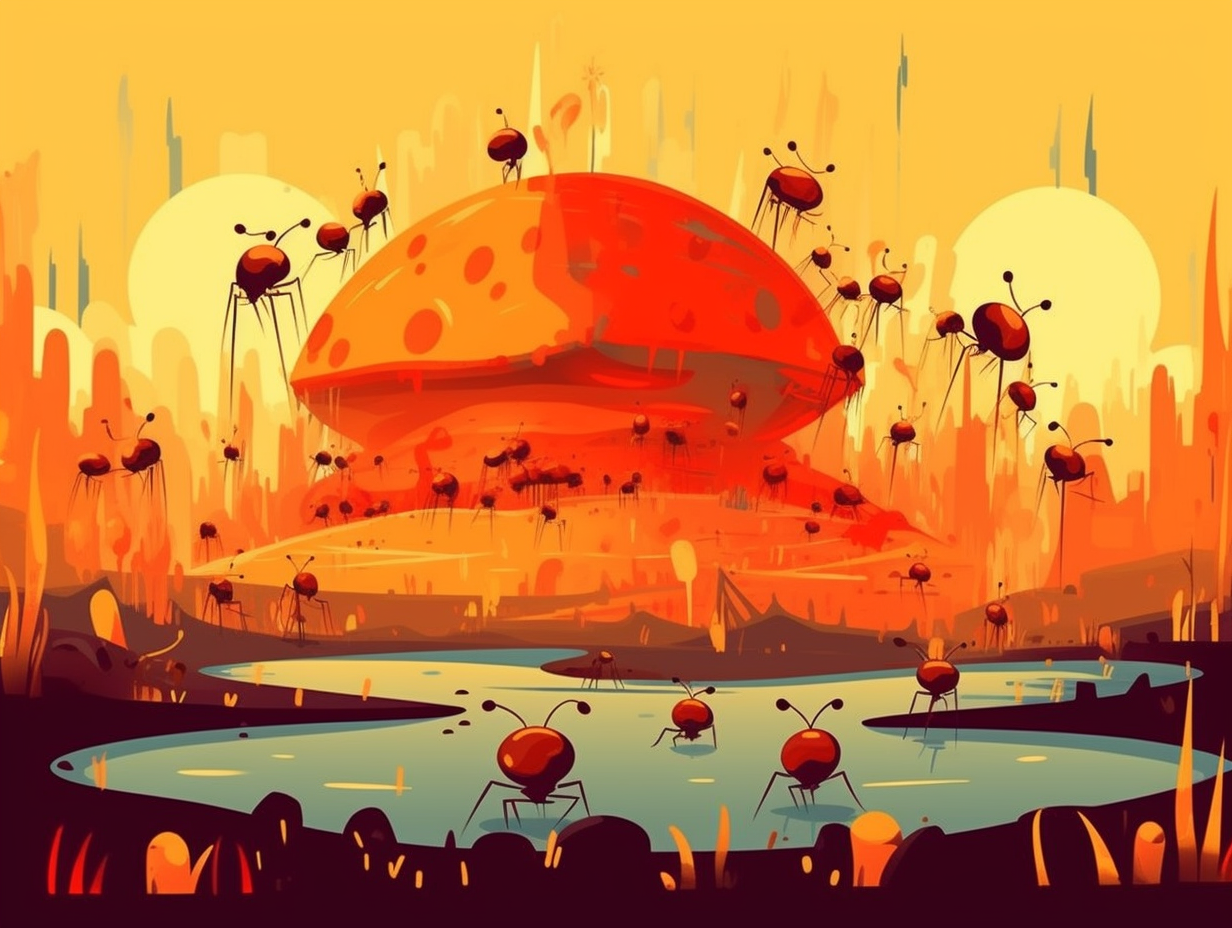
1. Ant Socials & Stolen Quiches
If attending ant socials has taught us anything, it's that their dress code is all about fiery red and they aren't shy to unleash their wrath when you steal a mini-quiche: Fire ants, known for their fiery disposition, are notorious for attacking in large swarms and leaving painful, red stings when they sense trouble. Their heightened sense of smell attracts them to your outdoor feasts, and they're even known to build massive reddish-brown mansions for their colonies, so it's wise to double-check your picnic territory before laying out the blanket.
Source => terminix.com
2. Fire Ant Raft Survival
Who needs ships or lifeboats when you've got ant bodies to float on? Fire ants put the "raft" in "c-raft-y" with their amazing teamwork skills: With their unique ability to link together and trap air pockets, they form floating rafts during floods, allowing them to survive for weeks without drowning or being swept away. Talk about making a big splash since their accidental importation to the southeastern United States in the 1930s!
Source => my.clevelandclinic.org
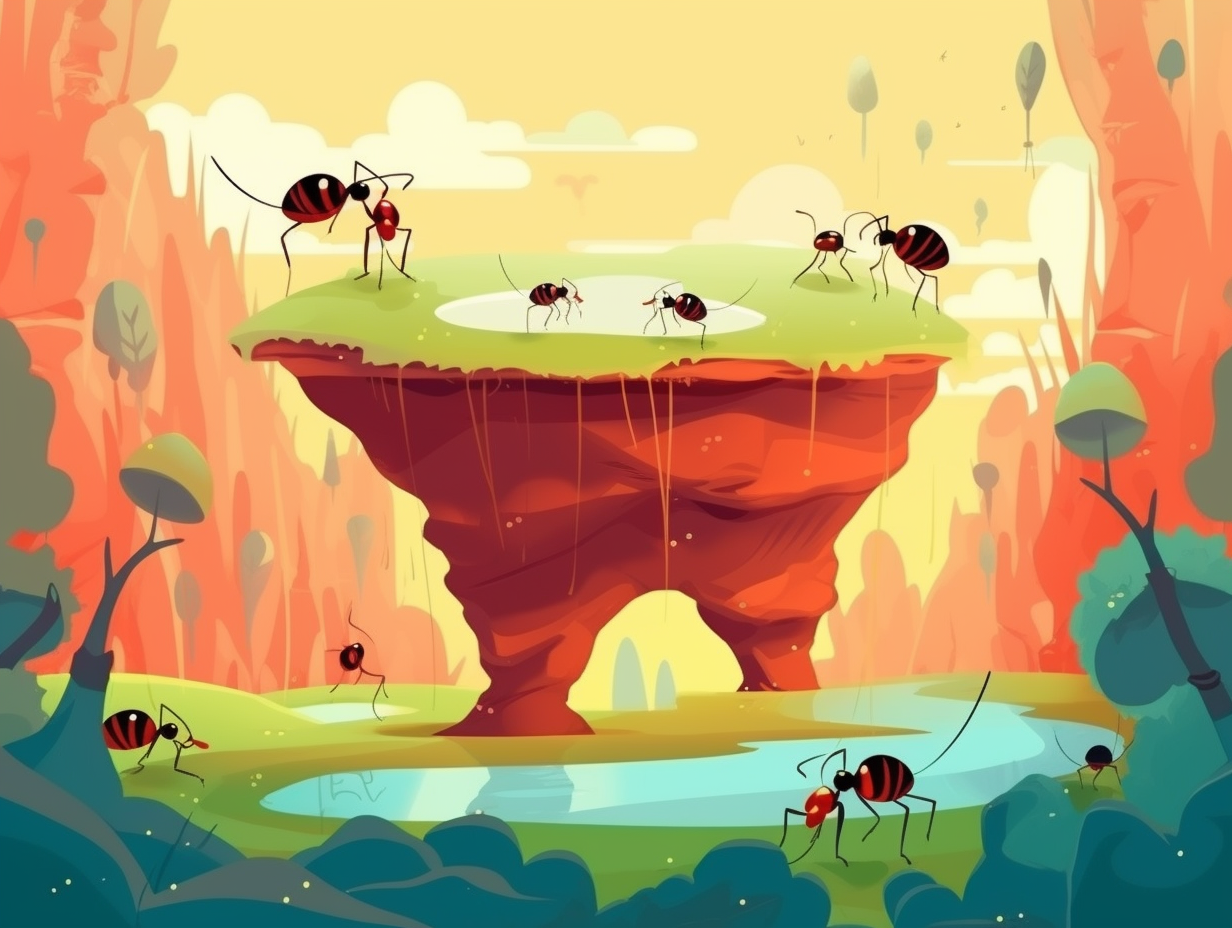
Did you know ants are skilled farmers? They herd tiny aphids, collecting sweet honeydew like micro ranchers! But beware, this can lead to plant damage and home invasions!
=> Fun Facts about Ants
3. Spicy Syringe Ants
Fire ants, nature's spicy little syringes, make sure to deliver their venom with a punch that’s not soon forgotten: Interestingly, these feisty creatures have two types of venom, alkaloidal for defense and pain-inflicting stings, and proteinaceous for immobilizing prey and turning them into an ant buffet.
Source => science.thewire.in
4. Red Menace vs. Earthworms
Beware the tiny red menace wreaking havoc on our wriggling and mooing friends: Fire ants are notorious for posing a threat to young and newborn animals, particularly targeting earthworms and livestock, thereby jeopardizing the health of our agricultural ecosystems.
Source => centralantcontrol.com
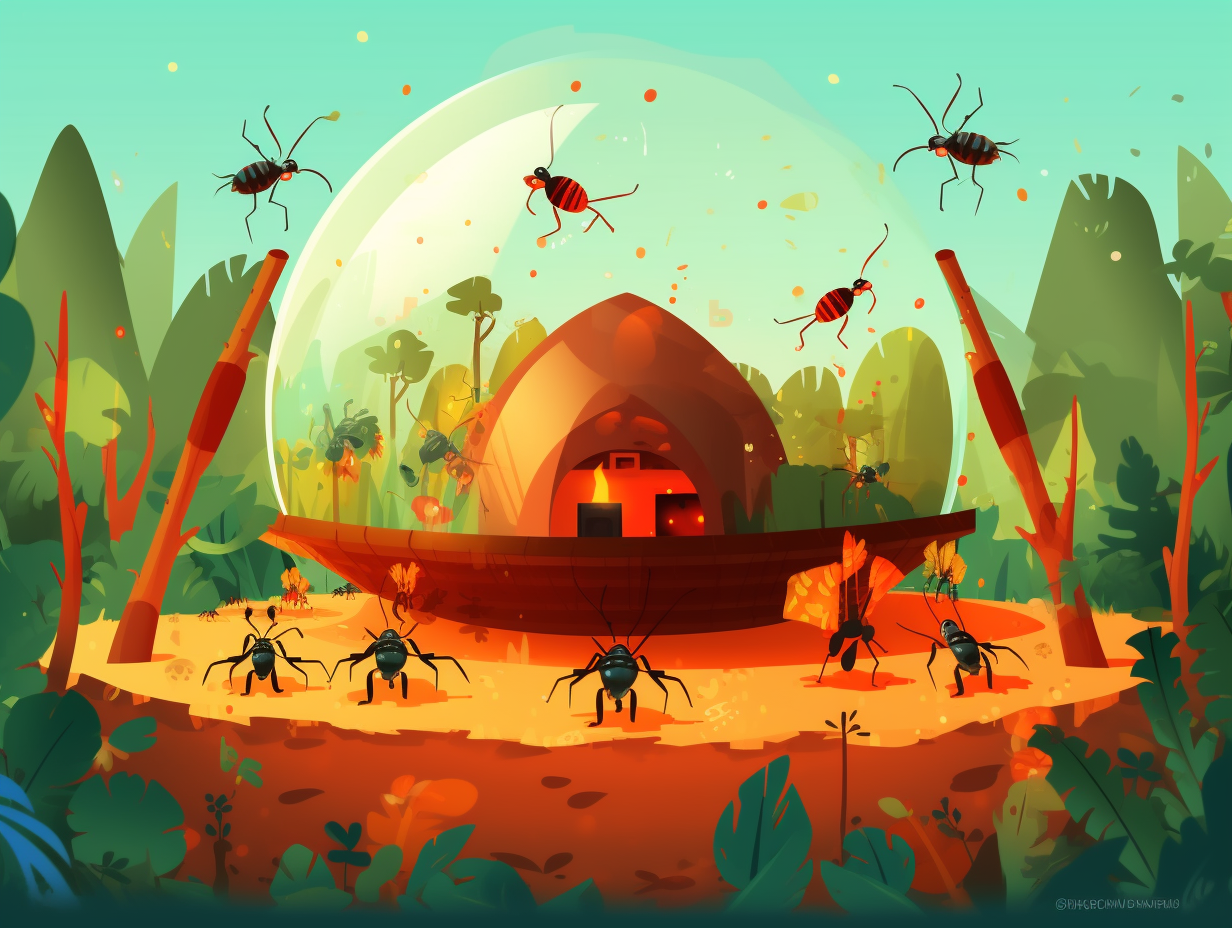
5. Auntie Venom Antibiotics
Who knew Auntie Venom could be such a lifesaver? Fire ants take ant-ibiotics quite literally: By sharing their venom among nestmates, they maintain a clean and healthy colony, according to USDA Agricultural Research Service. This venom doubles as an internal antibiotic, passed around through mouth-to-mouth or mouth-to-anus feeding, ensuring each ant - especially the vulnerable larvae - gets a healthy dose of disease prevention that keeps the entire colony out of the sick bay.
Source => ars.usda.gov
6. Hitchhiking Fire Ants
Ready for a hitchhiking adventure like no other? Fire ants have mastered the art of globetrotting, swapping their tiny backpacks for sneaky stowaway tactics! Think Ant-thony Bourdain: These six-legged travelers infiltrate materials such as sod, hay, and even beehives and can fly up to three miles on their own. The result? Rapid colonies spread across the world, making it essential for fire ant quarantine regulations to ensure materials don't carry these stealthy adventurers to new lands.
Source => ant-pests.extension.org
7. Identity-Swapping Ants
Step right up, folks, and witness the incredible, shape-shifting, identity-swapping fire ant extravaganza: a fascinating world where headgear metamorphoses, antennae get funky makeovers, and alinotums flaunt their unique couture, all depending on the size and social form of the colony. These brilliant little thespians don't let their stature define their performance; instead, it's their morphological talents that secure their starring roles in the grand colony production.
Source => academic.oup.com
8. Tiny Terrors Bite Hard
Whoever said laughter is the best medicine has never been bit by fire ants: these tiny terrors employ their powerful mandibles to latch onto their prey before repeatedly stinging with their venom-filled barbs.
Source => 6legs2many.wordpress.com
9. Hurricane Harvey Ant Survivors
When life gives fire ants lemons, they say "Bring it on, Hurricane Harvey": These feisty ants survived the catastrophic floodwaters in Texas by banding together into floating structures, moving between temporary homes before ultimately settling into a new residence. Furthermore, their subterranean expertise maximizes resources, with only 30% of the colony tirelessly digging tunnels, ensuring ant-sized traffic jams remain folklore.
Source => en.wikipedia.org

10. Organized Ant Workforce
"Ants in their pants" takes on a whole new meaning when you meet the fire ant workforce: This astonishingly organized colony can contain up to 500,000 multitasking worker ants, diligently caring for the queen, looking after the brood, building and maintaining the nest, defending their turf, and hunting down every last crumb to feed their ever-hungry community.
Source => fireant.tamu.edu
11. Designer Life-Rafts
When life gives fire ants lemons, they make designer life-rafts: These ingenious insects can construct floating structures from their own water-repelling bodies, consisting of up to 300,000 workers, to evade floods. As they form their buoyant haven, they also create tentacle-like bridges to scout for dry land, thanks to the teamwork of structural ants and their adventurous free ant counterparts.
Source => livescience.com
12. High-Flying Fire Ants
If fire ants had a frequent fliers program, they'd surely be racking up the miles: during nuptial flights, these little aviators can soar up to 250 meters in altitude and only 1% of them travel up to 10 kilometers, making it quite the adventure in spreading their fertile queens far and wide, and particularly difficult for us humans to eliminate them.
Source => antwiki.org
13. Fire Ants: Surprisingly Not Foodies
While fire ants might have earned their spots on MasterChef: Insect Edition with their diverse palate, they don't seem to have a taste for human food: These fiery foragers prefer feasting on plants, microorganisms, invertebrates, and vertebrate animals, all while steering clear of your picnic basket!
Source => a-z-animals.com
Related Fun Facts

